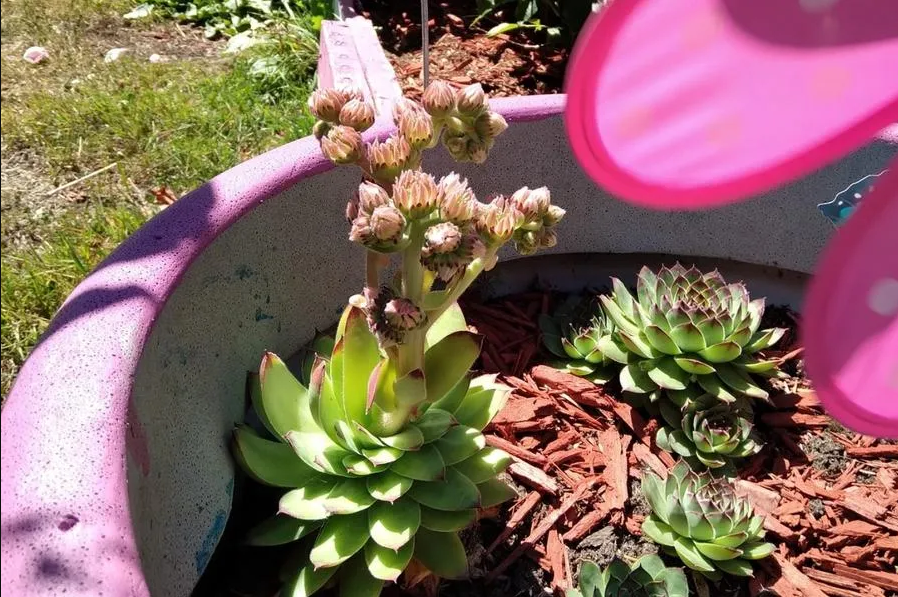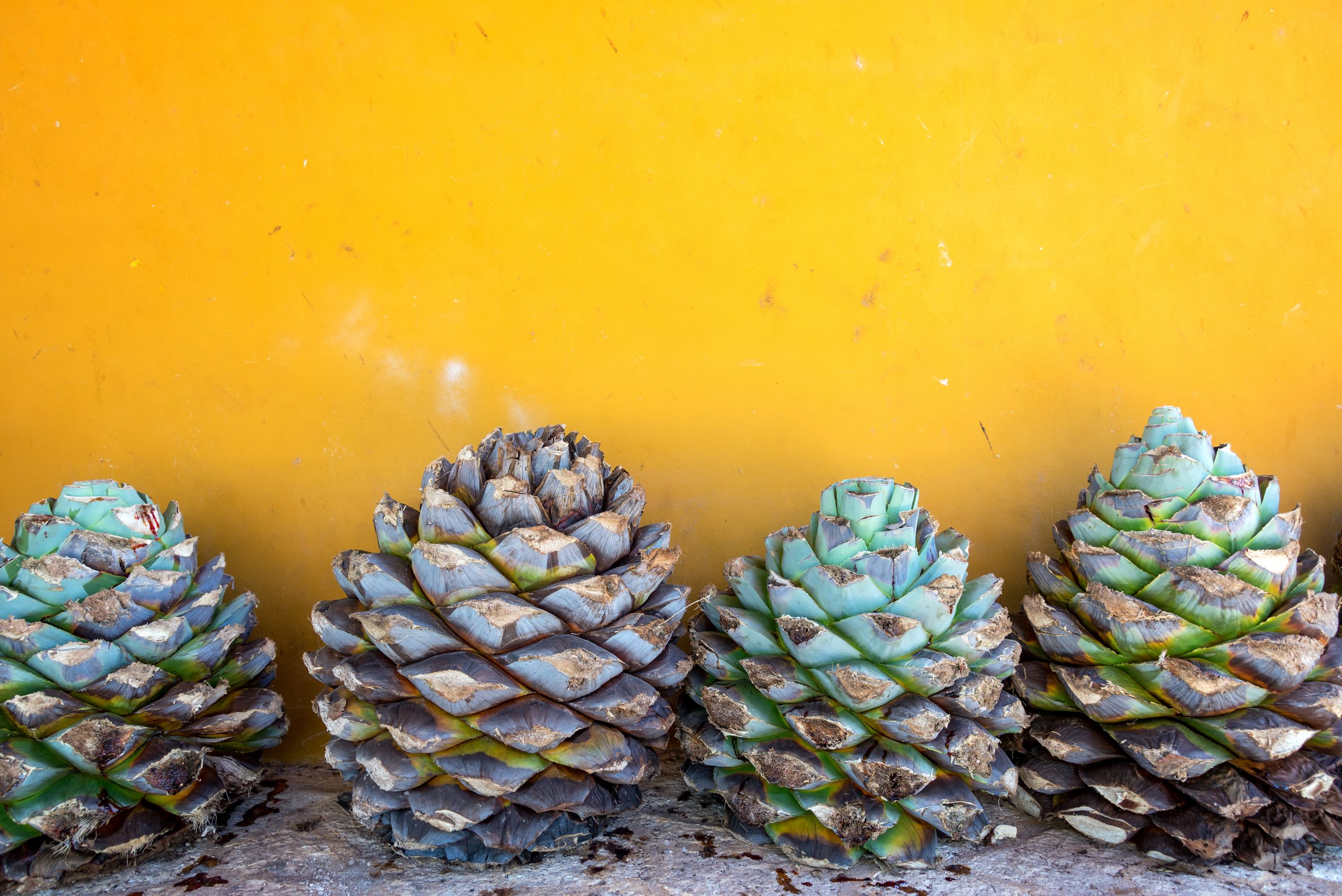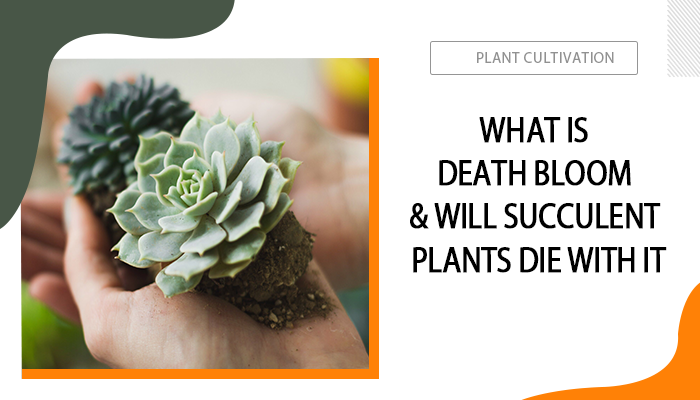Full Guide on What Is Succulent Death Bloom
Succulents are renowned for their resilience and unique beauty, but they too experience mysterious occurrences once in a while. Instead of seeing thick, water-storing leaves, you’ll find a flower coming out of the apex of the succulent. As strange as it is, this phenomenon is called succulent death bloom. I bet you have so many questions about this unexpected situation, don’t worry, this post gets you covered by all. Let’s start with the first question - what is a death bloom exactly?
Table of Contents
What is a Death Bloom
A death bloom refers to the phenomenon where a plant, particularly a succulent plant, often after several years of growth, produces a single flower stalk that grows vertically from the top. With the death bloom happening, the succulent diverts energy from its roots and leaves toward producing flowers and seeds.

Image source: gardentips360.co.uk
Will My Succulents Die after Death Bloom
The death bloom occurs once in the succulent's life, typically when it reaches maturity for reproduction, which may take 2-3 years in general. For some succulent species, like Sempervivums, Agave, and certain Aeoniums, this extraordinary event, death bloom, marks the end of the plant's life cycle. However, some plants, say, Aeonium, Sempervivum, and Echeveriacan, can bloom multiple times without dying - that’s because blooming is just a normal part of its lifecycle. So, don’t panic simply because you see a succulent blooming.

agave
How to Tell If A Succulent Is Death Blooming
A death bloom in succulents can be easily recognizable by a few key characteristics:
Single Flower Stalk: The most apparent sign of a death bloom is the presence of a single flower stalk growing from the center of the plant, devoid of leaves or offshoots. This vertical growth distinguishes the death bloom from regular flowering.
Budding and Flowering: At the onset of the death bloom process, buds will start to form on the flower stalk. These buds gradually open up into flowers over a few weeks. Once the flowers bloom and begin to wither, seed pods will develop in their place.
Wilting Succulent: As the death bloom progresses, the succulent will start to wilt due to the plant directing its energy towards the flowering and seed production process.
Distinctive Flower Colors: The flowers of succulents undergoing a death bloom are typically yellow or pink, resembling Agave flowers. In rare cases, they may also appear orange or nearly white.
Stalk Length Variation: The length of the flowering stalk can vary significantly depending on the species of succulent. It may range from a few inches to as long as 30 to 40 feet.
By identifying the features above, you can distinguish the death bloom from regular flowering.
More About Succulent: What Is About Christmas Cactus Bloom >
Why Does Succulent Death Bloom Happen
The causes of a succulent's death bloom can be mainly attributed to stress. Some key factors that may trigger a succulent's death bloom are:
- Watering Issues: Both overwatering and underwatering can stress a succulent, leading to the initiation of a death bloom. Overwatering can lead to root rot while underwatering can cause the succulent to prioritize reproduction as a survival mechanism.
- Light Insufficiency: Insufficient growth light can stress the succulent, prompting it to redirect energy toward flowering and seed production. Lack of adequate sunlight may signal to the plant that its survival is at risk. Perhaps, you need a succulent grow light.
- Pest Infestations: Insect infestations can cause stress to the succulent as pests feed on its tissues, prompting the plant to enter the death bloom stage as a response to the threat.
- Nutrient Imbalances: A lack of essential nutrients or imbalances in the soil can stress the succulent, triggering the production of flowers and seeds in an attempt to reproduce before its demise.
- Environmental Changes: Drastic environmental changes, such as sudden temperature fluctuations or shifts in humidity, can induce stress in the succulent, leading to the development of a death bloom.
- Age and Maturity: As succulents mature, they may naturally enter the flowering and seed-producing phase, which can culminate in a death bloom as part of their natural life cycle.
Can I Save Death Blooming Succulent
Unfortunately, if your succulent is already experiencing a death bloom, there is a limited chance of saving it. At this stage, the plant may have reached the end of its natural life cycle, and regardless of your actions, it is likely to die. However, you can still try the following approaches.
For Monocarpic Succulents
Monocarpic succulents are those that bloom once and then die. To keep them alive, you can try the following:
- Remove Flowers Before Seed Development: If you notice flower buds forming, you can cut off the flower stalk just below the buds before they bloom. By doing so, the succulent will divert its energy into growing new leaves and roots instead of producing flowers and seeds. This may prolong the plant's life and keep it thriving.

- Harvest Seeds and Propagate: Another option is to allow the flowers to bloom and produce seeds. Once the flowers detach from the mother plant, place them in a vase with no soil and no water. The flowers will bloom and produce seeds within a month. Meanwhile, many succulent babies may start developing near the cut stump of the parent. This way, you have a chance to harvest seeds for reproduction while keeping the parent succulent.
For Polycarpic Succulents
Polycarpic succulents are those that can bloom multiple times throughout their lives without dying. If your polycarpic succulent is flowering, you can consider the following options:
- Cut-Off Flower Stalk Before Blooming: To encourage the plant to focus its energy on growth rather than flowering, you can cut off the flower stalk before it blooms. By doing so, the succulent will channel its resources into producing new leaves and roots, leading to healthier growth and potentially prolonging its overall lifespan.
- Enjoy the Blooms: If you appreciate the beauty of your succulent in bloom, you can simply let the flowers bloom and enjoy the visual spectacle.
Conclusion
The succulent death bloom is a remarkable event that signifies the completion of a succulent's life cycle and its contribution to the ecosystem. Embracing the natural processes of life and death in the plant world reminds us of the interconnectedness of all living organisms. As we marvel at the beauty and resilience of succulents, let us cherish these moments and continue to care for these incredible plants in our homes and gardens.
FAQs about Death Bloom
- Can I prevent a succulent from undergoing a death bloom?
No, the death bloom is a natural and inevitable stage in the life cycle of a succulent.
- How long does a succulent death bloom last?
The duration of a death bloom can vary depending on the species of succulent and environmental conditions.
- Can I save a succulent after the death bloom?
Once a succulent has undergone a death bloom, it is beyond saving. However, collecting seeds can lead to new plant growth.
- Should I remove the flowering stalk after the death bloom?
It is best to leave the flowering stalk intact, as it may still produce seeds that will contribute to the ecosystem.
- Do all succulents undergo death blooms?
Not all succulent species exhibit a death bloom, but it is a common occurrence in many varieties.
More about Succulents: How to Transplant Succulents







I had a beloved plant, Big Bertha, death bloom a few years ago due to a mite infestation. I was very lucky it seems because she made it through. I didn’t know much about it at the time but she flowered, went to seed, and managed to survive. I cut the stalk (a bit long) when I realized what it was but she’d already seeded at that point. She attempted to grow babies where all of the flowers had been after I knocked off the seed pods, in a beautiful spiral all the way up. She luckily had lots of established thick air roots and many little baby’s in her large pot and I think they sort of helped each other out and she is still extremely healthy today and has filled out wonderfully where she was once nearly bald from having to prune back and treat the infestation, though with a nub at the top of her center stalk. She’s one of the Purple Aoneums that are fairly common. I got her when she was about 6 inches tall as a 17 year old and she’s about 7 or 8 years old now.
Referring to this:
“Harvest Seeds and Propagate: Another option is to allow the flowers to bloom and produce seeds. Once the flowers detach from the mother plant, place them in a vase with no soil and no water. The flowers will bloom and produce seeds within a month. Meanwhile, many succulent babies may start developing near the cut stump of the parent. This way, you have a chance to harvest seeds for reproduction while keeping the parent succulent.”
My questions:
When the flowers bloom, does that mean the seeds are present?
By “detach”, do you mean the flowers will fall off, or do I need to cut them off to put them in a vase?
Thank you!
Hi Erin,
By ‘detach’. it means cutting them off. If the folowers naturally fall off, chances are the whole plant starts to die off as well.